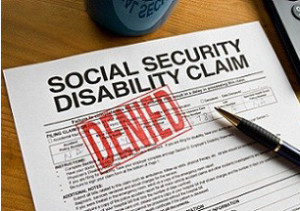 You apply for Social Security disability benefits, wait months to get a decision, and are shocked and disappointed when your claim is denied. Despite an initial denial, however, you may have a good chance of prevailing on appeal.
You apply for Social Security disability benefits, wait months to get a decision, and are shocked and disappointed when your claim is denied. Despite an initial denial, however, you may have a good chance of prevailing on appeal.
Initial disability determinations are made by agency employees. Appeals, on the other hand, are decided by an administrative law judge (ALJ) after a hearing. There are significant differences between the way disability is evaluated by the state agencies and the way ALJs approach the issue.
The Advantages of Administrative Law Judge Hearings
State agency decision makers tend to use Social Security regulations known as the Listing of Impairments as the unstated basis for denying claims, especially for claimants under age 50. If a younger claimant’s impairment does not meet a Listing, the state agency is unlikely to find the claimant disabled. But even if your impairment does not meet or equal a Listing, you will be found disabled if you can’t do your past relevant work or other work that exists in substantial numbers in the national economy.
Administrative Law Judge’s, on the other hand, get to meet the claimant and hear from him or her in person. They view their role as evaluating the entire case, including the testimony of the claimant and other witnesses, to determine what work capabilities the claimant still has. ALJs find younger claimants disabled because of inability to perform sedentary work much more often than state agency decision makers do.
State Agency vs. Alternative Law Judge Decisions
In 2010, the SSA Office of the Inspector General (OIG) did a study of the differences between state agency and Alternative Law Judge decisions for some impairments.
For example, ALJs found claimants with back impairments disabled 70% of the time, while the state agency denied 78% of such cases. The state agency found claimants under age 50 with back impairments not disabled 94% of the time while ALJs found them disabled 63% of the time.
The SSA has viewed such differences in results and approach to decision making as a problem. It has taken steps to encourage a unified approach to decision making at all administrative levels. However, disparities remain. So even if you’ve been denied by the state agency, if you are truly unable to work, you may have a pretty good chance of winning before an ALJ.
